Test: Your phone on TV
With the amount of multimedia, especially video, photos and video games, passing through our smartphones, it is natural to want to enjoy it a little bit on our connected HDTVs too… Here is how to display your phone content on a TV… “SlimPort’s main advantage over MHL happens to be its wide compatibility in terms of outputs.” SlimPort® can connect with DVI, VGA or DisplayPort.
– Les Numériques
With the amount of multimedia, especially video, photos and video games, passing through our smartphones, it is natural to want to enjoy it a little bit on our connected HDTVs too. One possibility that has been sold for years, but never clarified. Wired or in the air, here is how to display your phone content on a TV.
Convergence, convergence, convergence ... Often, manufacturers sell us interoperability-that-you-swear-it-is-all-simple-and now mostly a simplified connectivity between machines. But the reality is quite different.
Between different operating systems, protocols, other non-generalized standards, in a closed circuit of friends it’s hard, in the end, to know immediately and without struggling how to display multimedia content from your smartphone or tablet to a TV via a wire or through the magic of air.
You will have all the cards in hand to never get lost in what is definitely still in 2014, a real can of worms.
Note, before we start our little tour, connectivity between a smartphone and a TV, whether wired or wireless, is often done only with medium and high-end mobile devices. For tablets, it probably depends on the mood of the manufacturer ...
Wired
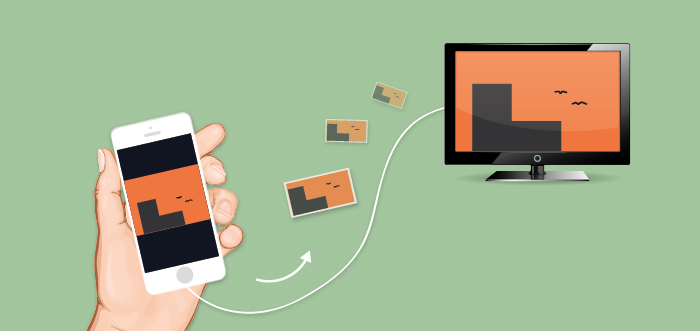
If brands of smartphones focus on the wireless convergence, terminals do not always forget to make them compatible with a wired output. Moreover, it is still the best way to enjoy its content without the risk of latency or quality loss. A connection that also displays the content in mirror mode. Of course, you can imagine that it is almost impossible to find this kind of useful accessory in the box when purchasing a mobile or tablet ...
Outside the (very rare) output Micro HDMI ports and owners of Apple's iPhone / iPad, both technologies face to the ultra-popular micro-USB port of a friend of the HDMI TV: MHL and SlimPort (normally mentioned in the product specifications). And when a product runs for one, he can not ride for another time.
Note for users of Windows Phone, Nokia Lumia or other smartphone brands: go directly to our data records, because you’ve be saved of hardship on these wired fields…
Micro-HDMI to HDMI, the royal way
For a moment, some manufacturers have tried to micro-HDMI output connector a new standard for Android smartphones. We remember the LG Optimus 2X or Motorola Atrix, beasts advanced race vintage 2011. Fashionable did not and very few mobile devices to further embark this kind of connector. It is found more readily on Android, sometimes supplemented by his big sister mini-HDMI shelves. Most Windows RT tablets also offer the 8.1 with a mirror or second display screen.
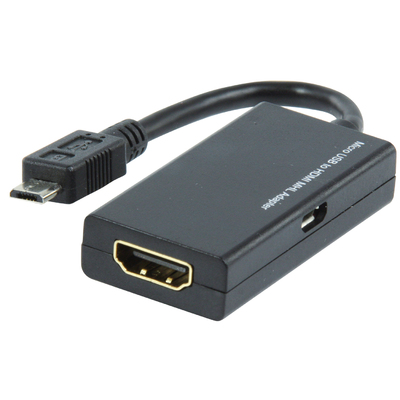
The advantage of this output is that the user does not really have to ask a question: it is sufficient to buy an adapter (from 2.50 €) or a micro or mini-HDMI to HDMI cable ( from € 9.50) of any country, of any color and can take advantage of the tablet or mobile mirror mode.
MHL, beefy consortium
Driven by a conglomerate Samsung, Sony, Toshiba and Nokia (but that was before) in 2010, MHL technology enables transit multimedia information from a smartphone or tablet, Android, above all, from its micro-USB port to HDMI. This is probably the best known public mobile wired / TV, but its inclusion is rare, as is the provision by the cable brands to their name.
MHL connection can go up to 1080p at 60 frames / s but remains confined to HDMI 1.3 and 1.4. It is via a cable with a micro-USB port and a side of an HDMI output on the other. It can connect to all HDMI inputs a TV, but it will keep a close watch on the battery life of your device because, yes, the multimedia connection via micro-USB pump a lot of energy port. This is why most MHL cables offer a micro-USB power supply with an HDMI output and not a direct HDMI output cable to connect the wiring to a power source.
Yet there is a good way to spend that extra cable. In fact, if your TV has an HDMI input with a small logo "MHL" attached, bingo! This is a sign that you can connect your product without needing a cable with a port to charge simultaneously since HDMI is able to provide power to your smartphone or slate.
Sony X9005B connection
The latest protocol, called MHL 3.0, supports the dissemination of UHD/4K picture. Technology currently available for the Sony Xperia and Xperia Z2 Z2 Tablet.
A MHL cable, with or without power supply, is usually between € 7 and a little more than 30 €.
SlimPort, the opening of the future?
Distant cousin of MHL, but developed as fully open, without an actual or restrictive consortium protocol, SlimPort is also highlighted by some brands. LG, for example, has converted all its upscale lines since the Optimus G, the Tablet G Pad included; Nexus Nexus 4 and 5 designed for Google are also part of the list. Again, the cables can be purchased at prices ranging from € 7 to € 30 and over.
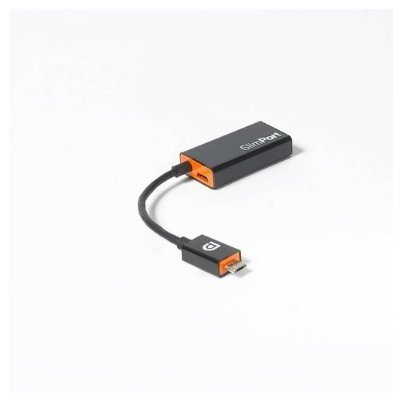
SlimPort’s main advantage over MHL, happens to be its wide compatibility in terms of outputs. If MHL is confined to the HDMI terminal, SlimPort can however land on DVI, VGA or DisplayPort, which is also a technical derivative. It also offers compatibility with future technologies HDMI 1.4. The downside is that SlimPort still cannot do without a power supply cable on the ideal that it is not expected that HDMI may one day power a SlimPort connection to otherwise MHL who can already do that.
But, as mentioned for the latter, if your TV has a USB port, adding the power cord micro-USB will not really be a problem. Just like MHL, SlimPort can reach UHD/4K resolution and 8 audio channels.
And bouncing on the introduction of the wired part, MHL and SlimPort are two different connections anyway, if you change to a brand that uses MHL, your SlimPort cable would you more no use. The reverse is also true.
Adapters for iPhone and iPad
Apple is racing to the convergence in the corner as usual. The firm has a wired connection that is somewhat similar to those of the MHL and SlimPort since it is a cable with the owner of the firm connector on one end and a block with a power supply and HDMI output of the other.
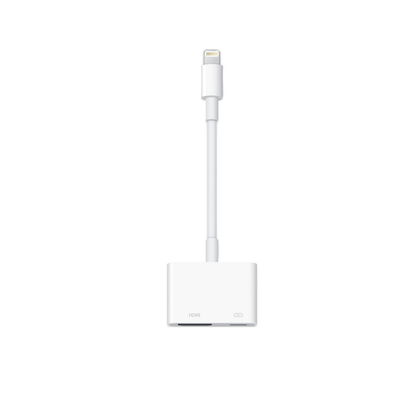
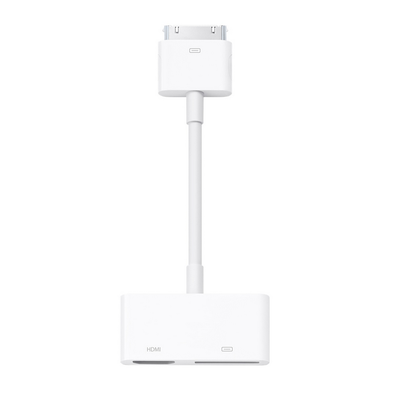
Whether for the iPhone and iPad 30-pin end of 2012 or the iPhone 5s and iPad Mini Retina and other iChoses mini-connector Lightning connector, there are now cables from Apple over 30 or € 40 and Third-party accessories available at less than 20 or 15 €.
Good to know, the Lightning and adapters, a contrario to port 30 pin degrade the video signal, the port does not yet manage native 1080p ... So a signal 1600 x 900 px comes out of your iPhone or iPad (which produces, for the latter, an image 2048 x 1536 px). Apple provides for months that a software update can fix this, but the matter is still not resolved.
Nor MHL, nor SlimPort, artful dodgers
Some brands like working outside the tacks, even though they are promoting these tacks. Thus we come across some products, often upscale and who do as they head to those zealous engineers accessories including micro-USB to HDMI connectivity is via a cable owner, while MHL-compatible. It was, for example, the case of the Samsung Galaxy S3, not compatible with MHL cable for Galaxy S2, but that could connect to a TV with an identical outside a MHL cable connections. Why do simple ...
The case is still rare today and most brands of smartphones and tablets prefer to choose a wired camp, or just leave the cable to focus on wireless.
Wireless
Less vertical than the wired connection, the smartphone / tablet + TV interaction does not occur in mirror mode. Some technologies do not allow this kind of display and focuses on all or part of multimedia content via the suitable drives, but also via Apps.
Miracast, mirror Google Android (and still a little BlackBerry 10 too)
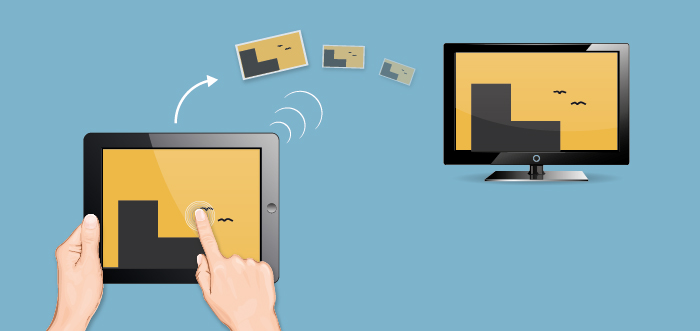
Born of WiFiAlliance consortium, based on DLNAe and strongly pushed by Google Android in the fall of 2012, now supported by BlackBerry devices (OS 10.2 minimum), the Miracast technology allows a screen copy of smartphone or tablet on a TV without using a wire. To do this, it is necessary that the TV is Miracast compliant (also with a web connection, so), or they add a dedicated key for this purpose. In theory, the current deployment of Miracast can collect signals up to 1920 x 1200 pixels, slightly higher than Full HD.
Directly on a compatible TV:
Generally, most items stamped "Smart TV" with Wi-Fi feature Miracast compatibility. But this is not counting on the marketing teams of manufacturers, who like rename any standardized technology to falsely make something unique, even loose the consumer. Example from our Korean friends LG and Samsung. And it uses the name to symbolize AllShare content sharing an external product to its TV. This of course includes the name Miracast. LG on the other hand, it retains the name Miracast on any compatible TV. Finally it was before the arrival this year of his TV WebOS ... who sell the name for Miracast Screen Share. Behind this name, understandable all the same, nothing changes and compatibility is still there.
Via a key or Miracast housing:
There are a growing number of keys and Miracast boxes on the market. Netgear Measy, Tronstar, Belkin, Sony (with a model for NFC pairing products) EZCast ... there is plenty of choice of sizes and shapes. Connecting HDMI to a TV, they communicate using Wi-Fi Direct Wi-Fi or via a box with a compatible smartphone or tablet. Out the screenshot is not frequently slowdowns.
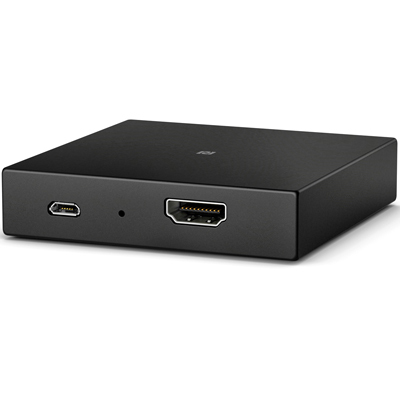
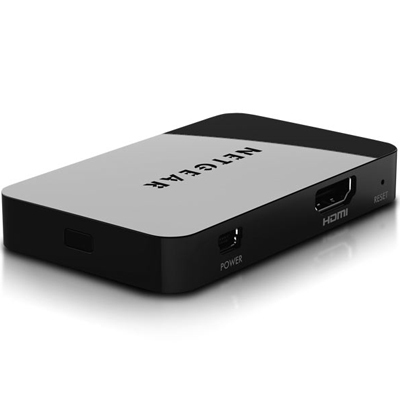
In contrast, like walking on eggshells, there are issues with video games and even some 3D Full HD big encoding when passing by this box. It is preferable to reduce the number of connected wireless products.
Chromecast, selective key but slightly open
The magic key to Google TV connected to the HDMI and using Wi-Fi, sold for just 35 € (or less with some special offers), has the good taste to work with Android from version 2.3 as well as iOS.
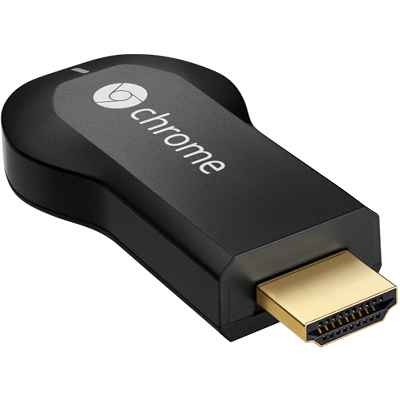
Before purchasing the beast, it is important to take into account that Chromecast does not fill the screen. Indeed, the key bed compliant content (applications VOD and catch-up TV, YouTube, UPnP players, some dedicated games ...) but does not display the mobile screen or slate. However, its operation - namely fetch the content on the Web and not on the mobile - you can do something else with your device once the content is launched. Note that the smartphone does not see his energy pumped, but the key is, it must be powered.
DLNA media almost ideal when it works
Queen and quasi first content sharing wireless technology, the Digital Living Network Alliance allows full interoperability of multimedia content between different types of products (PC, TV, smartphone, amp channels Hi-Fi ..) and is offered by most brands making audio-video, but not necessarily on all their products. We must therefore examine and see the logos below to win the jackpot. Side mobility devices are far from all DLNA compatible, but a brand like Sony has made one of its vectors preferred to share on the Xperia.

Here, no-copy, but hard-sharing of following content: photos, videos, music. The connection is made either directly by the TV Wi-Fi Direct, either through the Internet or NAS box from home. Generally, the management of DLNA sharing is very basic, with a list of content and play / pause. Users and servers with NAS drives as XBMC will be on fertile ground here.
Apple TV, the best friend of a iProduct
Outside Chromecast and numerous limitations, the Apple TV is the only case to enjoy, wireless, content on its iOS TV. It operates independently, with apps, iTunes and a browser while providing integrated access to an iPhone or iPad screen mirroring via AirPlay, the Miracast by Apple for Apple.
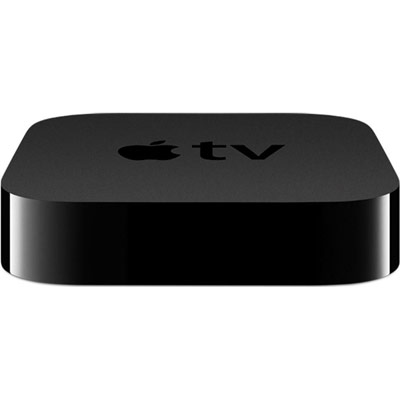
Once connected to an Apple TV, you will still see a small logo, as Chromecast, allowing you to swing your mobile screen on your TV via Apple TV. Again, be careful not to overload your wireless network sometimes you will barely see the Full HD content to fight some of the wing. For the video game, especially due to an iPad Retina display, it may be that the image jolts. We will therefore focus primarily on video, audio and photo.
